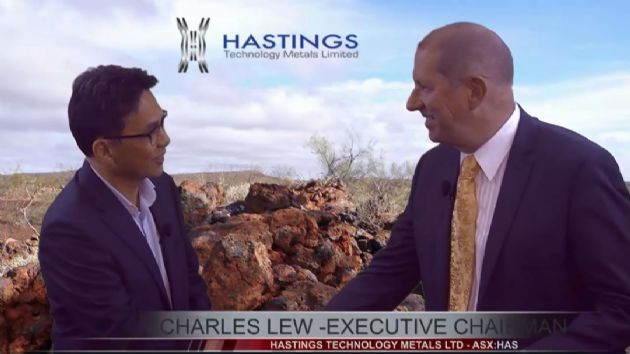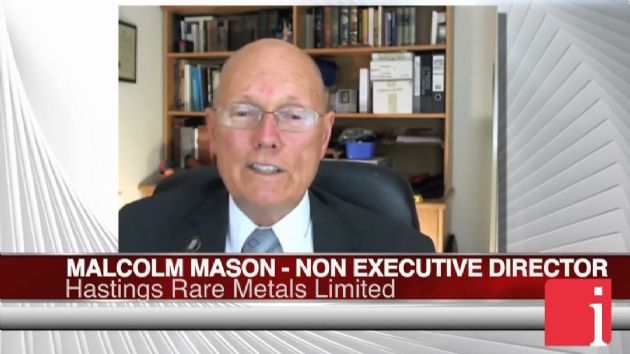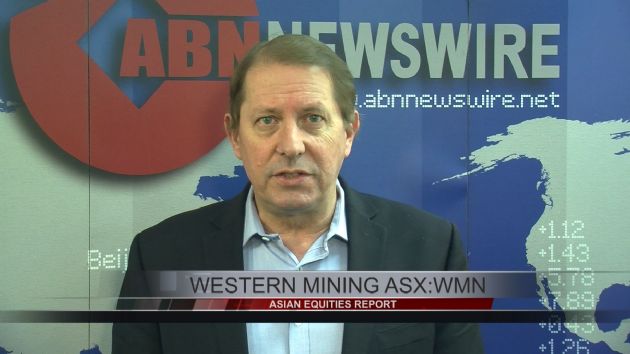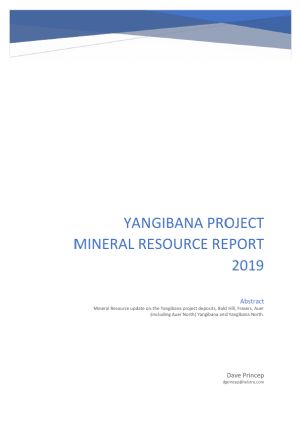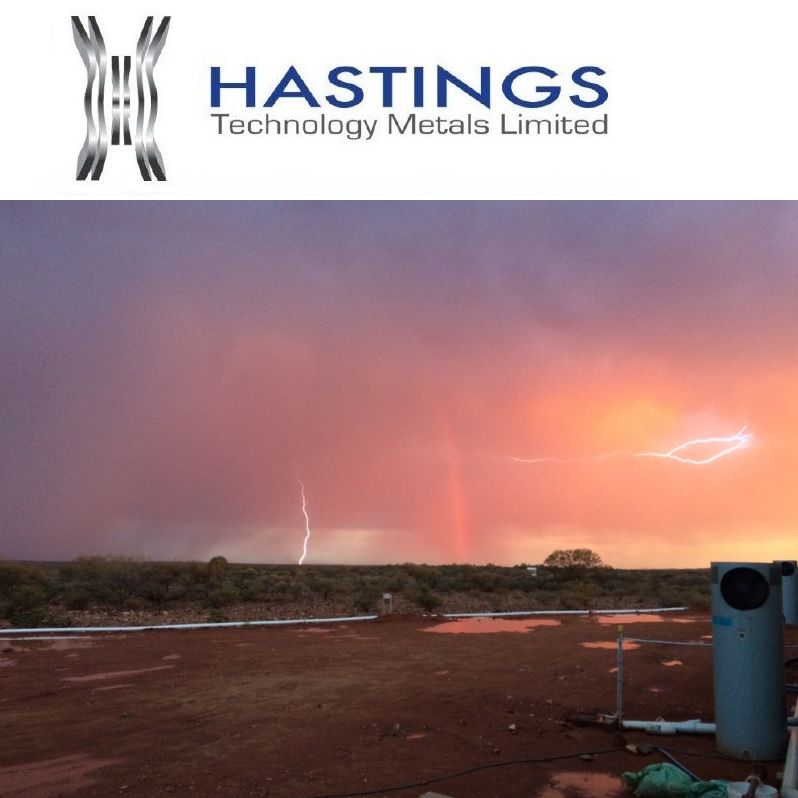
Mine Development Capital Costs
Sydney, Mar 11, 2019 AEST (ABN Newswire) - Hastings Technology Metals Limited ( ASX:HAS) ("Hastings" or "the Company") is pleased to announce that the board has approved the release of the updated capital cost estimate for the Yangibana Rare Earths mine to approximately A$427 million.
ASX:HAS) ("Hastings" or "the Company") is pleased to announce that the board has approved the release of the updated capital cost estimate for the Yangibana Rare Earths mine to approximately A$427 million.
- Board approves revised development capital cost of ~A$427M for the Yangibana rare earths mine.
- Refinements to the Definitive Feasibility Study (November 2017) confirms project economics with a re-calculated NPV of A$447M.
- Annual average free cash flow is estimated at A$137M.
- Cost certainty increased with 54% of pre-production capital in lump sum and large fixed price contracts.
- Board mandated change in process equipment supply to globally recognised Tier 1 companies capable of delivering performance guarantees and enhanced local support.
- Construction certainty increased through engagement of DRA Pacific Pty Ltd, a multi-disciplinary global engineering group with established track record and experience in project delivery and capital cost estimates.
- Scope to expand has been identified and preserved for the future.
Introduction
The mine located 270 kms north-east of Carnarvon in the Gascoyne region of Western Australia will be a robust, low cost and high cash generating asset with expansion potential that sets Hastings up for further growth poised to take advantage of the escalating electric vehicle (EV) market.
Hastings Executive Chairman, Charles Lew said "Selection of global Tier 1 equipment suppliers, refinements of the process plant layout and changes to the tailings storage facility give further confidence in the constructability and operability of the project."
Future expansion options have been enabled through process design improvements allowing further development of the largely unexplored tenement package.
Project Capital Cost
Since the Definitive Feasibility Study (November 2017), the project NPV has decreased by 4% to A$447 million due to capital cost increases as a result of the board mandated decision to source, where possible, only Tier 1 process plant equipment suppliers with the capabilities to provide unrivalled equipment performance guarantees and field support and backup.
Due to the approval and execution of newly approved large projects and expansions, pressure is being experienced within WA's construction labour workforce which has led to competition for specialist construction personnel and major growth in wages within this sector. The impact for Hastings has resulted in increased salary costs of approximately A$42 million dollars from the historically reported DFS position.
Improvements to the mining schedule in bringing forward additional high-grade feed, higher consensus commodity prices arising from the rapid adoption of EV, and a lowering of the expected ramp-up period post construction have contributed to maintaining the NPV close to the DFS level.
In February, Hastings announced substantial improvements in beneficiation recoveries to ~80% based on the second continuous flotation pilot plant test programme. In addition, through an operability assessment, the process plant layout has been redesigned and the footprint reduced mitigating further capital increases.
These project value improvements more than offset and justify the increase in capital costs.
Early contractor engagement started in H2 2018 with approval to commence early works and will continue through to H1 2021 with completion of construction, dependant on finalisation of project financing. Approximately 54% of pre-production capital costs is tied up in lump sum and fixed price procurement contracts either awarded or near finalisation with leading industry specialists and partners.
Upon receipt of the final Environmental Protection Authority (EPA) approval, construction of the processing facility and other above ground infrastructure including the tailings storage facility is scheduled to commence in H2 2019.
Over the last few months Hastings has recruited a number of skilled and highly experienced individuals into key operational roles, to implement construction and commissioning works and further review the project's value enhancements providing potential upside to capital and operating cost improvements.
Construction will progress in two phases. This approach assists to reduce on-site construction personnel thereby enabling a 25 per cent reduction in the size of the camp.
Phase one commenced in H2 2018 with early works approvals enabling some camp construction and access road clearing. The EPA permit process continues, and State and Federal Government departments are working to an agreed schedule, which should see the final Environmental Licenses granted by Q3 2019.
The second phase, subject to the EPA permit approval, is scheduled to commence in Q3 2019. This phase includes construction of the processing plant and other above ground infrastructure, construction of the tailing's storage facility, power station and gas reticulation.
There is strong local community and local business support, underpinned by a voluntary native title partnering agreement with the Thiin-Mah Warriyangka, Tharrkari and Jiwarli (TMWTJ) joint native title claim. This agreement was signed in November 2017.
DRA Pacific Pty Ltd, a multi-disciplinary global engineering group has provided an updated Capital Cost estimate for the Access Road, Process Plant, Tailings Facility and associated services. This was done in consultation with various vendors, specialist consultants and Hastings personnel.
Key Financial and Production Metrics
Net Present Value (post-tax)*: ~A$447 million
Internal Rate of Return*: ~28%
Project Payback (post tax): 2.6 years
Capital Cost: ~A$427 million
Pre-Production Capital**: ~A$413 million
Average annual free cash flow (post tax): ~ A$137 million
Mining production***: ~ 1.0 Mtpa ore
Mine Life: ~ 10+ years
Annual MREC production capacity: ~ 15,000t
Annual TREO production capacity: ~ 8,850t
Annual Nd2O3+Pr6O11 capacity: ~ 3,400t
*Using Adamus Intelligence forward pricing, 8% real discount rate. Refer to Reserves Increase by 34% to 10.35Mt Covering 10 Years released on 29 January 2019.
**Including A$32.8M in contingency, excluding A$14.1 million in sunk costs to January 31st, 2019.
*** The production targets referred to in this announcement are based on Probable Ore Reserves. Refer to Reserves Increase by 34% to 10.35Mt Covering 10 Years released on 29 January 2019.
Two phased construction project
The two-phased work program is scheduled to occur in the following order;
Phase 1: Enabling Infrastructure
- Installation of the accommodation camp
- Road access clearing
- Airstrip certification
- Finalising design work
- Ordering of long lead time items
- Offsite fabrication of plant
- Approval of the EPA permits (which will enable phase 2)
- Further near mine operational water drilling.
Phase 2: Construction
- Process plant
- Mining offices and workshop
- Camp to Plant Access Road
- Bore field drilling and water abstraction
- Communications network
- Gas power station and gas pipeline
Cost and constructability certainty
Cost certainty has increased with 54% of the total pre-production capital in lump sum and fixed price contracts near finalisation with experienced construction partners:
- FLSmidth - Kiln
- SAG/Regrind Mill - tier 1 supplier
- Flotation cells - tier 1 supplier
Other key work packages are:
- TAPC/Tialoc - Off gas Scrubber
- Fleetwood - purchase, transport and installation of the accommodation village
Improvements since DFS
Changes made since the DFS to improve economics and manage risk include:
- Reduced and optimised the plant footprint and layout, and added capacity for greater automation to improve productivity and lower costs;
- Replacing 2 x mobile crushers, with 1 fixed jaw crusher;
- Added a conveyor and live stockpile and refeed hopper giving up to 24 hours surge capacity, after crushing;
- Redesigned TSF to better handle and accommodate slurry material;
- Installed concentrate silos between beneficiation and hydromet area to give 3 days' live surge capacity to concentrate production and kiln feed;
- Included allowance for Ore sorting technology;
- Gas pipeline and power station - Build Own Operate and Maintain agreement including installation of an additional transmission line and substation being negotiated
DFS v Updated FS costs
Since the DFS (November 2017) pre-production capital costs has increased by approximately A$91 million primarily accounted for by:
------------------------------------------------------------------ A$ million ------------------------------------------------------------------ - Process Equipment Upgrades 40.0 o Hydromet area 22.0 o Piping 6.0 o Flotation 6.0 o First fill reagents 3.0 o Ore sorting 3.0 - Tailings Storage Facility 3.0 Other major costs increases are: - Camp size increased from 240 to 380 beds 3.0 - Increase in Mining pre-stripping 2.8 - Services (water/earthworks/plant control) 13.0 - Spares & First Fills 1.6 - Indirects (labour/consultants) 42.0 - Others 9.5 Costs savings: - Airstrip/powerstation/gas pipeline/other 23.4 ------------------------------------------------------------------
Risks
There are risks specific to the Yangibana Project and risks which are relevant to the mining industry in general which may cause the project's actual results to differ materially from the results expressed or anticipated in this announcement. These are discussed in the Yangibana DFS released on 28 November 2017 which should be read in full together with this announcement.
Risk mitigation
- Airstrip - local agreement with pastoralist has been secured for airstrip access close to camp site which is capable of landing up to 70 seat aircraft. CASA certification has commenced;
- Jaw Crusher - replacement of the mobile jaw crushers with fixed units
- Kiln - purchase of a FLSmidth Kiln;
- Extra Ore stockpiling - live feed storage capacity after jaw crusher and in silos after beneficiation;
- Power station - 15 MW build own operate and maintain unit
- Performance guarantees - strict performance guarantees with all major suppliers
Future growth optionality
The future organic growth profile of the project has improved as a result of the design work and financial modelling being completed. The base case:
- Excludes upside from any benefits derived from ore sorting;
- Excludes optimisation of the mining schedule;
- Excludes redesigning of the pits to reduce strip ratios;
- Now sees a process flow sheet which can accommodate future expansion whilst reducing the overall footprint to reduce construction costs and facilitate maintenance access.
To view the release with tables, please visit:
http://abnnewswire.net/lnk/X2R7ON9Q
About Hastings Technology Metals Ltd
 Hastings Technology Metals Ltd (ASX:HAS) (FRA:5AM) is advancing its Yangibana Rare Earths Project in the Upper Gascoyne Region of Western Australia towards production. The proposed beneficiation and hydro metallurgy processing plant will treat rare earths deposits, predominantly monazite, hosting high neodymium and praseodymium contents to produce a mixed rare earths carbonate that will be further refined into individual rare earth oxides at processing plants overseas.
Hastings Technology Metals Ltd (ASX:HAS) (FRA:5AM) is advancing its Yangibana Rare Earths Project in the Upper Gascoyne Region of Western Australia towards production. The proposed beneficiation and hydro metallurgy processing plant will treat rare earths deposits, predominantly monazite, hosting high neodymium and praseodymium contents to produce a mixed rare earths carbonate that will be further refined into individual rare earth oxides at processing plants overseas.
Neodymium and praseodymium are vital components in the manufacture of permanent magnets which is used in a wide and expanding range of advanced and high-tech products including electric vehicles, wind turbines, robotics, medical applications and others. Hastings aims to become the next significant producer of neodymium and praseodymium outside of China.
Hastings holds 100% interest in the most significant deposits within the overall project, and 70% interest in additional deposits that will be developed at a later date, all held under Mining Leases. Numerous prospects have been identified warranting detailed exploration to further extend the life of the project.
Brockman Project
The Brockman deposit, near Halls Creek in Western Australia, contains JORC Indicated and Inferred Mineral Resources, estimated using the guidelines of JORC Code (2012 Edition).
The Company is also progressing a Mining Lease application over the Brockman Rare Earths and Rare Metals Project.
Hastings aims to capitalise on the strong demand for critical rare earths created by the expanding demand for new technology products.
| ||
|





